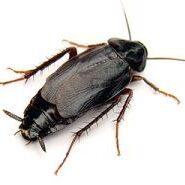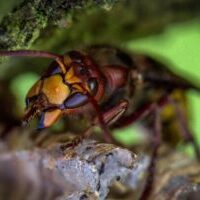
PUSS CATERPILLARS
The puss caterpillar is the larval form of the Megalopyge opercularis moth, also known as southern flannel moth. It is visually striking in both larval and adult forms. The inch-long larva is generously coated in long, luxuriant hair-like setae, making it resemble a tiny Persian cat. It is variable in color, from downy grayish-white to golden yellow-brown. It often has a streak of bright orange running longitudinally.
The ‘fur’ on early-stage larvae is sometimes extremely curly, giving the larva a cottony, puffed-up look. The body tapers to a tail that extends well beyond the body. The middle instar has a more disheveled, ‘bad-hair-day’ appearance, without a distinctive tail. The adult moth is also very bizarre in appearance, covered in long fur in colors ranging from dull orange to lemon yellow, with hairy legs and fuzzy black feet.
The ‘fur’ of the puss caterpillar contains venomous spines that cause extremely painful reactions in human skin upon contact. The reactions are sometimes localized to the affected area but are often very severe, radiating up a limb and causing burning, swelling, nausea, headache, abdominal distress, rashes, blisters, and sometimes chest pain, numbness, or difficulty breathing. Additionally, it is not unusual to find sweating from the welts or hives at the site of the sting. Ironically, the resemblance of the larvae to soft, colorful cotton balls encourages people to pick them up and pet them. Remedies that may be helpful in some cases include removing broken spine tips from the skin with tape, applying ice packs, use of oral antihistamine, application of hydrocortisone cream to the site of the sting, systemic corticosteroids, and intravenous calcium gluconate.
Megalopyge opercularis can be found on oaks, elms, citrus and other trees, and many garden plants such as roses and ivy. It is distributed throughout the southern United States, Mexico, and parts of Central America. The larva does not spin a real cocoon, rather, it separates from its furry skin and uses it as a protective covering while it pupates. The adult moth has two broods per year with a possible partial third brood in the South when conditions are right. Females usually mate the night of emergence and lay their eggs during the first two nights following mating. Eggs are laid on foliage or small twigs and are covered with hair from the underside of abdomen of the female. Eggs hatch in 6 to 8 days.
Larvae of the southern flannel moth are polyphagous and have been recorded from plant species belonging to 41 genera. Like many other Lepidoptera larvae, mature puss caterpillars sometimes wander from the host plant and onto other nearby plants prior to spinning their cocoons.
EXPERTS IN PEST CONTROL SINCE 1970!
Enter your information or call
(816) 279-2000
By clicking “GET ESTIMATE” I authorize Preferred Pest Control to contact me at this number. I understand I am not required to make a purchase.
PREFERRED PEST CONTROL
At Preferred Pest Control & Home Inspections, we offer comprehensive indoor and outdoor pest extermination and treatment services to stop infestations at their source. Our qualified exterminators are equipped to inspect your home environment, identify the scope of the problem, and determine the best course of action to eliminate those unwanted pests.
And when you hire us, you’ll benefit from our:
-
Reasonable pest extermination rates.
-
Easy, convenient appointment scheduling.
-
Dedication to your safety and comfort.
If you think you might have a pest problem, don’t wait to get help. Call today for more information or to request an estimate.
As the leading pest extermination provider in NW Missouri and NE Kansas, we're equipped to handle any pest that may pop up and protect your property from future problems.
AREAS WE SERVICE












